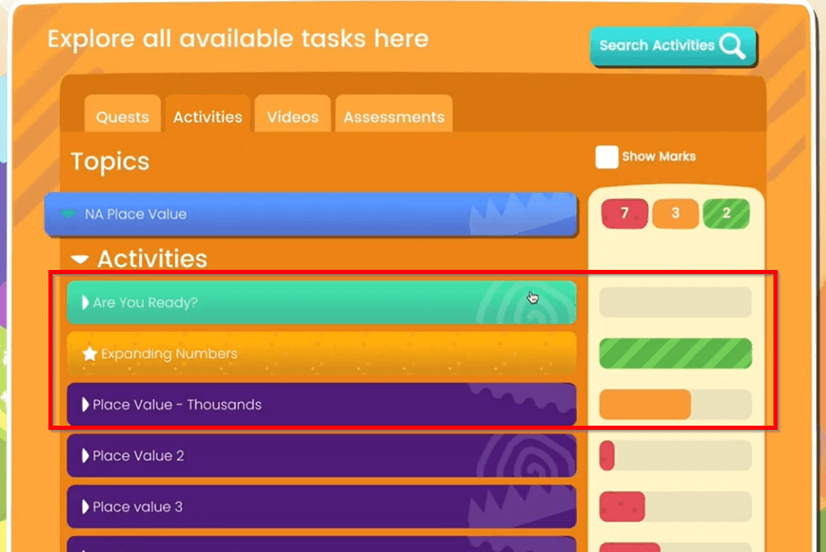Mathematics can be stressful for homeschoolers. It might have been a few years since you personally engaged with conceptual mathematics, but the pressure is on to ensure your child understands the subject — their future work and prosperity almost depends on it.
It’s even harder to decide on or create a mathematics program. Knowing what your child is prepared for, what’s important, or what order concepts need to be taught in, can be confusing.
When it comes time to make smart choices around your home mathematics program, you’re going to face 3 main challenges:
- Aligning your program with a curriculum (or designing your own)
- Finding good resources
- Keeping learning engaging
Here’s how you can overcome these challenges and make a home mathematics program you’re confident with.
Negotiating the mathematics curriculum
As is the case with classroom-based schooling, your mathematics program needs to reflect a curriculum: a designated set of sequenced learning outcomes tailored to your child’s stage of development.
The first step is to ensure that you are aware of any regulations pertaining to homeschooling in your home state. Certain states require homeschoolers to align themselves with the same curriculum taught in schools, while others allow you to determine an independent curriculum of your own.
In the event that you are able to create your own homeschool curriculum, there are a few key questions to ask yourself when choosing your approach:
Will my curriculum be mastery-based or spiral-based?
Mastery-based curricula are step-by-step. Your child is introduced to a single concept and develops a deep understanding of it before moving on to the next concept. This builds strong foundational understanding and covers a broad spectrum of topics, giving them tools they need to tackle exponentially harder mathematics problems.
Spiral-based curricula introduce and reintroduce multiple concepts, providing more and more depth each time. Compared to mastery based models, where content is concentrated into discrete blocks or ‘units’, a spiral based approach distributes the same content over a longer period of time. It’s a slightly more progressive structure, but the end goal of mastery remains the same.
What is my budget?
Budget isn’t limited to money — you also have to budget your time. Figuring out your financials and the minutes you have to spare makes planning your curriculum a lot simpler.
Parent-led or child-led learning?
Some children need you there to guide them through exercises over and over again until they are confident. Others can’t wait for you to leave so they can get on with learning on their own.
You know your child’s preferred learning method better than anyone, so adapt your curriculum to what’s going to benefit them most.
Do I go with the flow or choose a script?
Depending on your experience, confidence and understanding of mathematics, you might feel more comfortable with the freedom of teaching exactly how and when you want, or more confident if you have a script to fall back on.
Once you’ve answered those questions, you’re ready to find and choose resources.
Finding quality resources
There’s an almost endless supply of mathematics resources to be found online; the struggle is finding the good ones.
What makes a bad resource?
A lot of resources tend to be exciting but not educationally sound, long abandoned by users and creators, or tied to an extra product or service you don’t want or need.
What makes a good resource?
Try looking for these three things when deciding on whether a resource is right for your child:
- Does it provide demonstrable educational value? If the outcomes of the learning are clear, you can be confident that time spent with it will be meaningful and valuable.
- Is it being used by any other parents? Other parents, even if they’re not homeschoolers, are a good indication that the resource is worth a try.
- Can you use it any way you see fit? Resources can come with a lot of strings attached — what’s important is that you can use it in the way that’s going to help your child the most.
Deciding on tech
Tech has become a fundamental part of learning. Depending on how often you want to include tech, or where you think tech will work best, will decide where you make your investment.
Devices — Most educational software doesn’t need huge processing power, so entry-level laptops and tablets can access ebooks, play educational videos or run educational apps.
Apps — Quality educational apps can save homeschoolers a huge amount of money. For example, finding and printing mathematics worksheets can be time-consuming and expensive, whereas an app can contain hundreds of instantly accessible activities.
Content — The biggest strength of tech is how it delivers content, whether it’s introducing concepts through videos or making learning engaging through games.
Which brings us to the last and, arguably, the most important part of the program — ensuring it’s engaging.
Keeping learning engaging
The three enemies of learning are irrelevance, difficulty and boredom. Without the right level of challenge, variation and real-life application, mathematics can quickly become annoying or snooze-worthy. When planning out your program, be sure to leverage a variety of techniques in order to help your child develop a better understanding of the various uses of mathematics. Applying mathematics in everyday life is the best way to give your child a solid foundation.
Here’s a few ideas:
Tie mathematics to the real world
It can be done while cooking, playing, or even during story-time. This makes strong connections between life problems (How much flour does this cake need? When will we arrive at the station going at this speed?) and the mathematics skills needed to solve them.
Set learning that’s achievable and challenging
This can be tough to balance, but ensuring your child is consistently overcoming challenges makes learning rewarding and maintains momentum. Progress reports and the data (scores, marks, signs of development) that come from them are a great way to see if your child is at the right level of challenge.
Make it fun!
When learning is engaging, it sticks. Games and activities that reward children provides motivation to keep progressing, learning and doing their best.
Need support with your mathematics program?
We’ve got you sorted. Mathletics has over 30,000 mathematics questions, activities and games engaging learning activities, and is loved by millions of children around the world.
Start your free 14-day trial of Mathletics today!








